Thanks to several readers, I have some more material on the Swiss ZfK-55 sniper rifle today. To start off, Beryl sent this vintage photo of a group of Swiss troops with a ZfK-55 (and a big ol’ rifle grenade as well):
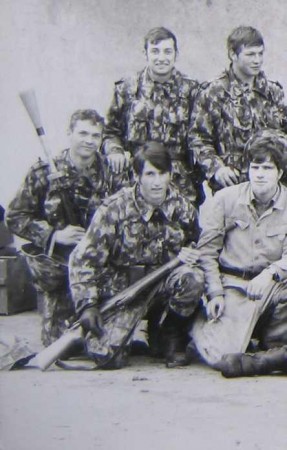
Next up, we have a couple manuals for the rifle. The first is a basic operation manual printed (in German) in 1956, right after the rifle was adopted. The other is a much more details armorer’s manual dating from 1967. That one is in German as well, but an English translation has been floating around the ‘net, and I’ve included it here as well:
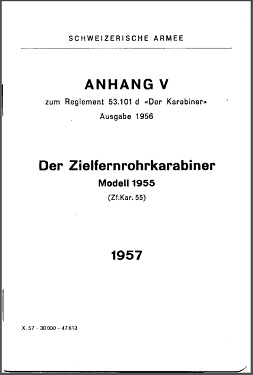
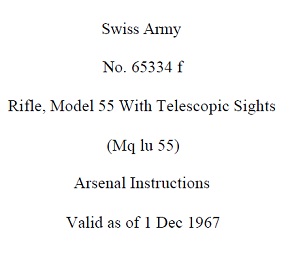
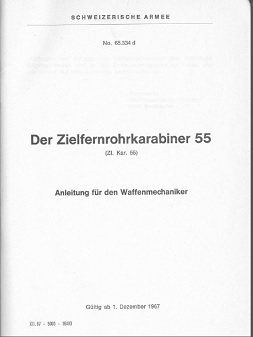
In addition, Robert sent me an English translation of a 1958 Swiss manual which covers the K11, K31, 31/42, 31/43, and ZfK-55 rifles. The 31/42 and 31/43 are rare and very interesting scoped variants of the K31, without the additional changes made to the ZfK55 (muzzle brake, heavy barrel, bipod, etc). The 42 version used a 1.8x scope, and the 43 had a 2.8x scope, both of which were mounted integral to the left side of the receiver. Here’s a photo of a pair of 31/42 rifles above a ZfK-55, which I’ve lifted from the forum at SwissRifles.com:
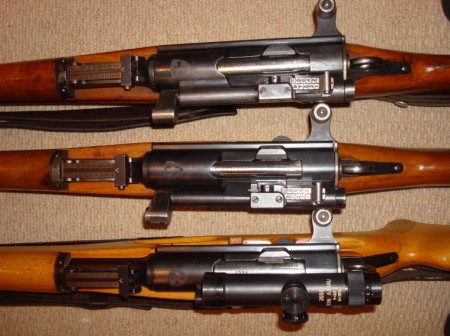
FYI, if anyone is interested in acquiring a 31/42 or 31/43 (or virtually any other variant of Swiss straight-pull rifle), Simpson Ltd has them available (31/42, 31/43, 31/43, 31/43). But, I digress – here’s the English manual covering all of these guns:
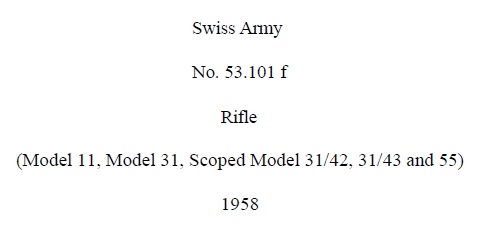
Of note, the manual describes the ZfK-55 as being intended for targets out to 600m, which is a bit shorter range than we tend to think of a “sniper” today. Of course, it also mentions that one of the requirements for a marksman to qualify as a sniper is to make a first-round hit on a roughly 7 inch square target at 300m. Not a trivial shot!

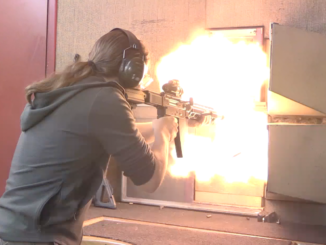
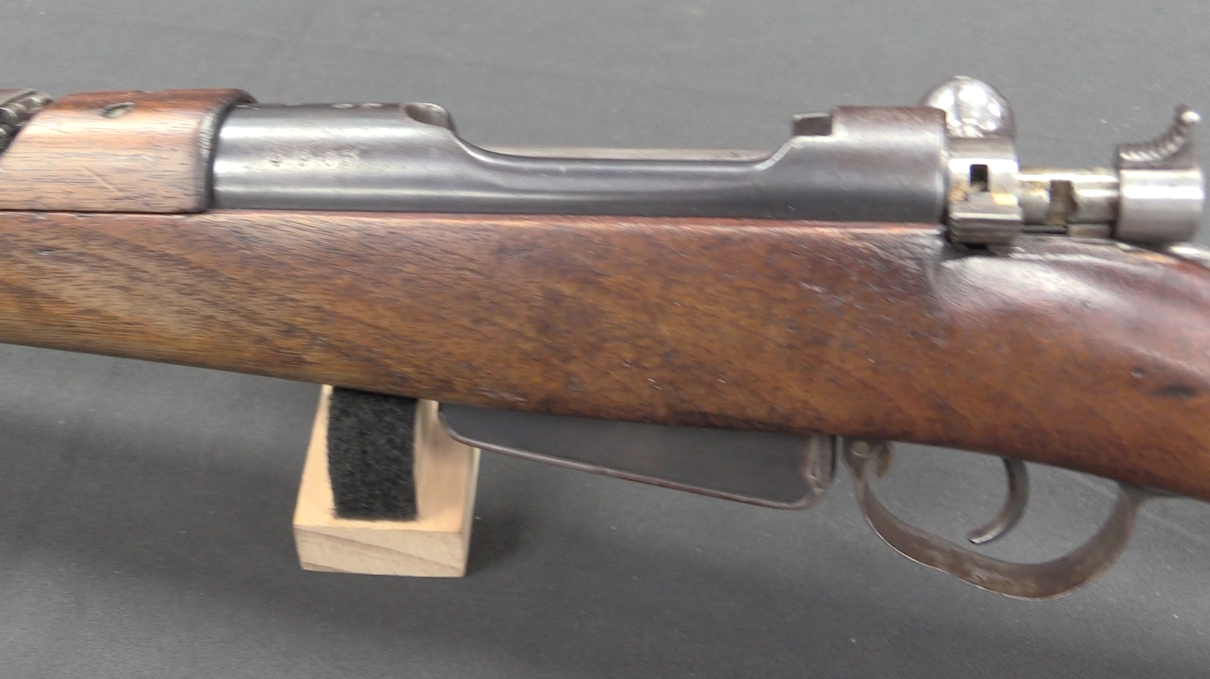
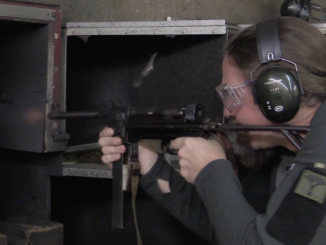
The current Shotgun News has a Peter Kokalis article on taking some Knight’s Armament execs sniper-rifle shooting. They shot nine historic rifles as well as their latest SR-25 (the SR-25 is the basis of the M-110 SASS). I just skimmed it this morning. Lots on the Zfk-55, of which Kokalis is a true fan, along with some other oddities like an East German 5.45 “sniper” rifle which I suspect was actually a biathlon rifle for the GST, the DDR’s version of Russia’s DOSAAF, meant to prepare youth for elite military service.
Good to hear Peter K. is till around and kicking. I had exchange with him many years back. He is one of most knowledgeable people in this trade. I have to check that out. Was it recent number?
I remember seeing those East German 5.45 “sniper rifles” for months on end in Shotgun News during the Great Eastern European Yard Sale back in the early 90s. They looked like a clone of the SSG and were advertised as having been used by guards on the Berlin Wall. Like you, I always suspected they were actually some kind of competition rifle rather than military issue. Seems like the price was four or five hundred bucks with a “name brand scope” which also sounded iffy. This was before there was much (if any)5.45 available in the States, so I never had much interest in getting one.
Loved the group photo. Ludwig, get that *$#%ing muzzle brake out of my pocket! The hair styles remind me of three-tour Viet Nam Green Beret and author Jim Morris on the whitewall haircut: “I’ve never understood why a squared-away military appearance means looking like a lance corporal in the Barvarian Balloon Corps.”
Looking at the old photo, I would hate to get sniped with the rifle-grenade, though direct-firing the grenade is probably a no-no.
Grüezi!
This is one interesting stuff. I looked thru manual and was bit surprised that the practice range was only up to 500m. This seem to be in contradiction to which I have before this being 800m. I would think the rifle and round should be capable of that. It is long way across those Swiss valleys!
The other observation I have (and forgot to mention in previous article) is location of bipod. This is way too close to action (far from muzzle) and may cause instability when taking aim. Has anyone experience with this kind of arrangement?
Hi, Denny :
For what it’s worth, I have used some different models of rifle ( FN-FAL in 7.62mm x 51 NATO, vz.58 in 7.62mm x 39, Weatherby Vanguard 2 in .300 Weatherby Magnum and .308 Winchester, MOLOT VEPR Tactical Sniper in 7.62mm x 54R ), all with the bipod mounted under the forward end of the hand guard ( well ahead of the action but still also well behind the muzzle ), and have gotten very good stability and accuracy out of them. I’ve tried the same weapons with the bipod mounted closer to the muzzle, but results have been similar. I think that as long as the bipod is not situated too far back or too close to the action, assuming all else is equal, the end result will differ very little in practice. Of course, this is not to say that certain rifles will not work better with a different bipod-mounting position — a lot may depend on the individual weapon and its design, center of balance, center of gravity, barrel harmonics with bipod in place, etc.
I appreciate your response Earl. From previous reading more that experience (thus the question) I recall that the purpose of bipod mounted closer to receiver was to be able to transfer aim more quickly and this approach was exercised among others on Vz.52 machinegun.
Based on my sense of kinematics, any movement induced (even before fire) at butt end will be proportional to movement at muzzle. Therefore, I would naturally lean on having support the other way – closer to muzzle. But I imagine, there are some advantages to both. On ZfK55 it looks little too biased in one way.
You could be right about this. There’s only one way to find out for sure — schedule a live-fire comparison test with the ZfK-55 if one is available.
@ Beryl Barnett :
Could you elaborate a bit more about your experiences with the ZfK-55 bipod issues you mentioned? Thanks in advance.
600 meter is still quite a long way. Also this is a Swiss manual, not a marketing publication: its has to be absolutely true. maybe 900 meter will work, but maybe the trials/tests/scopes/training where only certified out to 600 meter.
Still like the fact that army service is mandatory (enlistment) and you get to choose to take your rifle home after. Shooting mathes are being organised where the government supplies ammo. Some Swis families have multiple generations of rifles at home.
does this rifle as primary extraction ?
It actually looks that way. When you open one of manuals you will see that; its quite complex geometry.
Very good and informative follow-up, Ian. Thanks! The SwissRifles.com site is terrific, with detailed information and articles based on really solid practical knowledge.
The bipod on my zfk didn’t lock into the open position and tended to “fold up” from the recoil of a shot. I do not swear I have full knowledge of it but it seems to be a flaw to me.
On my farm in southwestern ontario Canada near the town of Mitchell we have a swiss rifle club. My father who loved shooting let them have a 300m range next to our pond.The members of the club are swiss citizens and as such the swiss government supplied the K31’s ‘no idea which modell) and ammo. Until my fathers death we also had a rifle and could compete with them. They shoot matches on weekends and compete with other swiss. Almost all are german speakers
I assume that you are going to continue with this unique, if somewhat exclusive-sounding, tradition on your farm? If so, please keep us posted, as there must be many wonderful stories associated with the membership ( but only if they are willing to share — I have no wish to intrude upon someone else’s privacy ).